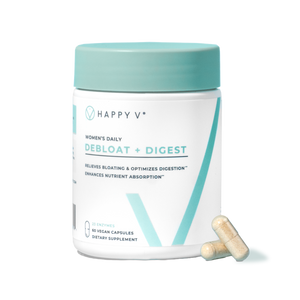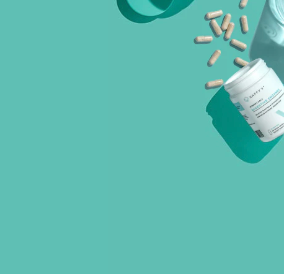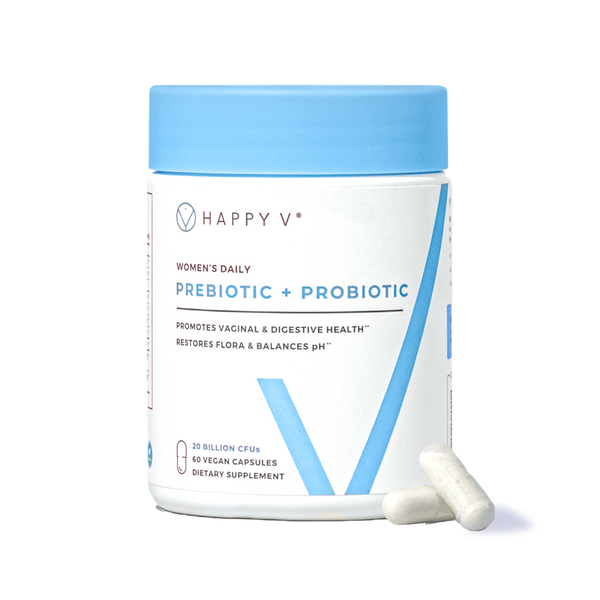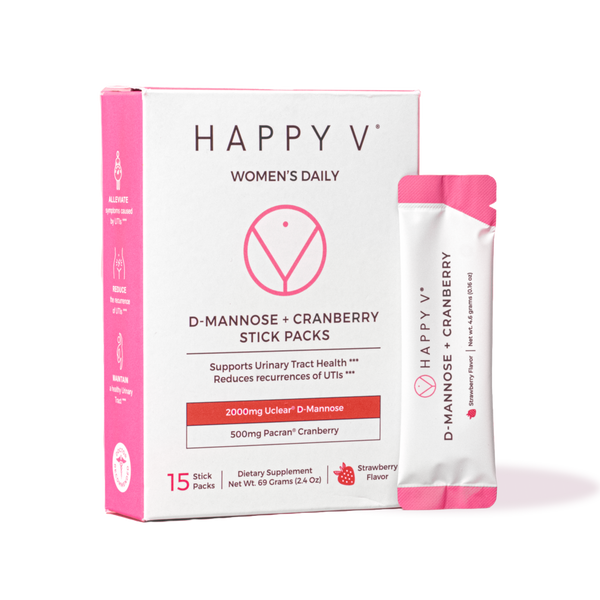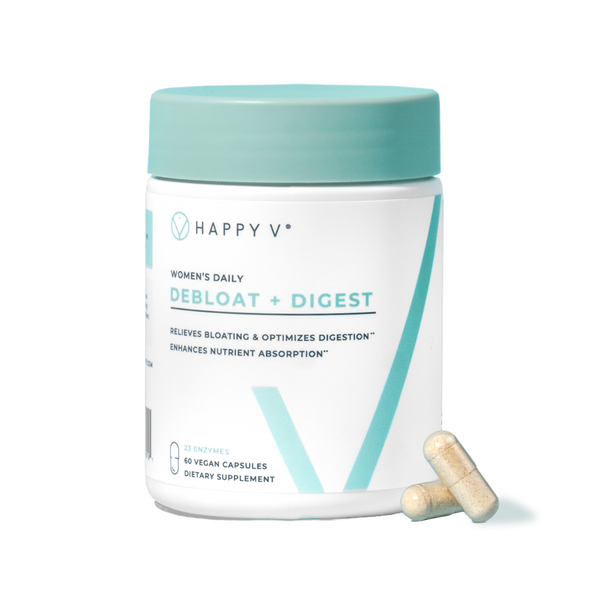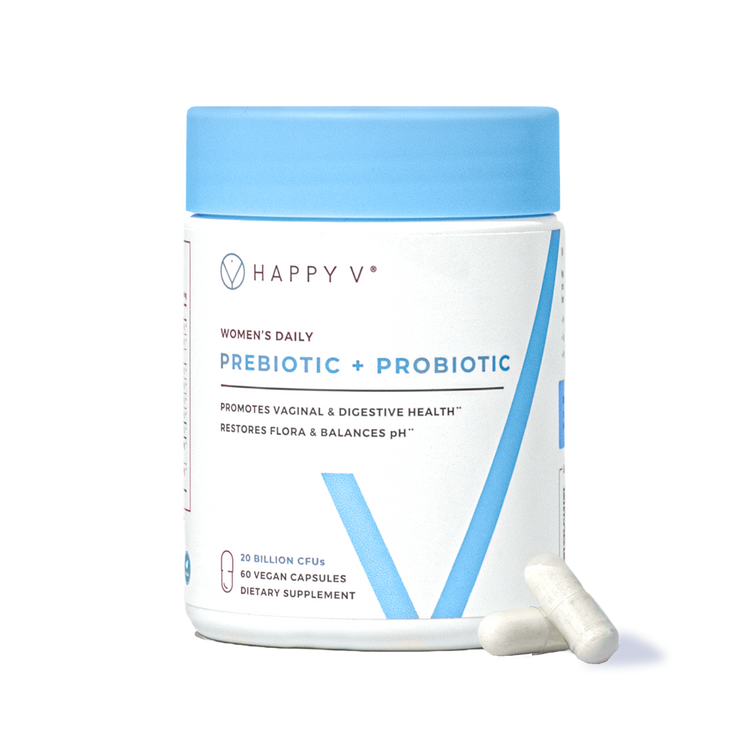- Fact Checked
- November 07, 2025
- 6 min read
Can BV Cause Infertility?
Table of Contents
Table of Contents
You may know bacterial vaginosis (BV) as the culprit behind that persistent fishy odor or unusual vaginal discharge1, but BV’s impact can go deeper than discomfort. For people trying to conceive, there’s growing evidence that this common vaginal infection may interfere with ovulation, increase the risk of complications like miscarriage and pelvic inflammatory disease (PID), and even lower IVF success rates.
So, what’s the connection between your vaginal microbiome and your ability to get pregnant? And can probiotics actually help? We’ll discuss all that and more.
This post is for informational purposes only and does not constitute medical advice. See full disclaimer below.
What Is Bacterial Vaginosis, Again?
Bacterial vaginosis (or BV) happens when there’s an overgrowth of harmful anaerobic bacteria2, like Gardnerella vaginalis, that disrupts the normal balance of lactobacilli in the vaginal microbiome. This imbalance can lead to symptoms like:
- Thin, gray, or white vaginal discharge3
- A strong, fishy odor
- Vaginal irritation or burning
- Increased risk of recurrent vaginal infections and STIs
But even more concerning? Many sexually active women with BV don’t have any symptoms at all, which means it can go unnoticed and untreated.
Can BV Actually Affect Fertility?
Short answer: yes, potentially.
Research shows that untreated BV can increase your risk of developing pelvic inflammatory disease, or PID, an infection of the genital tract that can damage the fallopian tubes, uterus, and ovary4. PID is a major cause of infertility in women.
Here’s how it works:
- Harmful bacteria spread from the vagina to the upper reproductive tract.5
- This may lead to endometritis, inflammation, and scarring in the uterus and fallopian tubes.
- This can block sperm from meeting the egg or prevent successful implantation.
In addition to damaging the reproductive system, BV has also been linked to increased risk of early pregnancy loss, preterm birth, and lower in vitro fertilization (IVF) success rates, especially in women with unexplained infertility6.
The Role of the Vaginal Microbiome in Reproductive Health
A healthy vagina is home to mostly good bacteria, especially types of Lactobacillus like L. crispatus and L. acidophilus7. These friendly microbes help keep things in balance by maintaining a low (slightly acidic) pH, producing natural defenders like lactic acid, and crowding out unwanted bacteria.
When your vaginal flora is in good shape, it helps:
- Reduce inflammation in the reproductive tract8
- Strengthen cervical mucus, which acts as a barrier against infections like STDs and STIs
- Support sperm health and increase your chances of conception
But when that balance is thrown off by things like antibiotics, douching, or sexually transmitted infections (STIs) like Chlamydia or Gonorrhea, harmful bacteria can take over9. This can lead to issues with vaginal health and may even affect your fertility.
Other Common Causes of Female Infertility
While bacterial vaginosis and PID are important risk factors, they’re not the only reasons someone may struggle to conceive. Some of the most common causes of female infertility include:
- Ovulatory disorders: Irregular or absent ovulation is a leading cause of infertility. Polycystic ovary syndrome (PCOS) is responsible for up to 80% of ovulatory infertility cases. Primary ovarian insufficiency (POI) is another condition that can impair ovulation10.
- Endometriosis: This condition occurs when tissue similar to the uterine lining grows outside the uterus, often leading to pain, inflammation, and scarring. Endometriosis can interfere with implantation or damage the fallopian tubes, and 30–50% of women with endometriosis may experience infertility11.
- Tubal factor infertility: Blocked or damaged fallopian tubes can prevent the egg and sperm from meeting or stop a fertilized egg from reaching the uterus. This is often the result of PID, which itself may stem from infections like chlamydia, gonorrhea, or BV-related overgrowth.
- Uterine abnormalities: Fibroids, uterine polyps, or congenital abnormalities can make implantation more difficult or raise the risk of miscarriage12.
- Hormonal imbalances: Thyroid dysfunction, elevated prolactin levels, and other hormone-related conditions can affect ovulation, egg quality, and cycle regularity.
- Unexplained infertility: Sometimes, no specific cause can be found even after extensive testing. This type of infertility affects an estimated 15–30% of couples.
Understanding the full range of causes can empower women to explore appropriate medical care, especially if conception has been difficult after 6–12 months of trying.
Can Probiotics Help Prevent BV-Related Infertility?
There’s growing interest in using probiotic supplements to manage BV and improve women’s health outcomes.
Probiotics, particularly those that contain clinically proven strains of lactobacilli, may help:
- Restore balance in the vaginal microbiome13
- Recolonize the vaginal environment with beneficial bacteria
- Reduce recurrence of BV and vaginitis14
- Minimize inflammation that could lead to PID or tubal infertility
At Happy V, our probiotics feature a clinically studied blend of Lactobacillus rhamnosus (HN001) and L. acidophilus (LA-14). These strains have been shown to colonize the vagina after oral intake, support vaginal pH, and reduce symptoms of BV, urinary tract infections, and even candida overgrowth.
While probiotics are not a replacement for antibiotics like metronidazole or clindamycin, they can be an important complementary strategy for long-term vaginal and fertility support.
Prebiotic + Probiotic
Maintains vaginal pH and restores gut health.
What to Do If You’re Trying to Conceive and Have BV
If you’re actively trying to get pregnant (TTC) and suspect you might have BV or have a history of recurrent BV or STDs, here are some steps to take:
- Talk to your healthcare provider: Proper diagnosis and antibiotic treatment are key to resolving infections and preventing complications.
- Support your microbiome: Incorporate dietary supplements like probiotics and fermented foods like yogurt, kefir, and sauerkrau into your daily routine.
- Avoid douching and harsh cleansers: These can strip away protective bacteria from your vaginal flora.
- Practice safe sex: Although BV is not classified as a sexually transmitted disease, sexual activity can influence the vaginal microbiome.
Final Thoughts
Bacterial vaginosis is a common vaginal infection, but that doesn’t mean it should be ignored, especially if you’re focused on conception. BV-related overgrowth of harmful microorganisms can quietly impact fertility, pregnancy outcomes, and overall vaginal health.
Supporting your vaginal microbiome with the right lifestyle habits and probiotics may help protect your fertility for the long haul.
Happy V is here to support your journey with expertly formulated, OB/GYN-trusted probiotics designed for vaginal and gut health. Because your wellness—and your future family—deserve clinically backed care.
Keep the Conversation Going
- Visit our blog for more on BV treatment options and women's health tips.
- Join our private Happy V Facebook group to hear from others who've been there.
- Explore supplements designed to support your vaginal health journey.
Disclaimer: This blog is for informational and educational purposes only and is not intended to diagnose, treat, cure, or prevent any disease. Statements about supplements have not been evaluated by the Food and Drug Administration. For more information about vaginal infections, visit the CDC or speak to a licensed healthcare provider.

